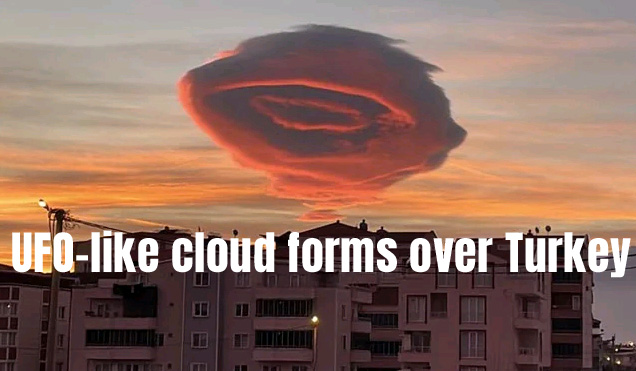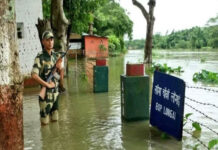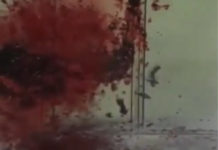1
Photos and videos of a lens-shaped cloud forming over Turkey have caused a stir online.
The oddly shaped cloud appeared in Turkey’s Bursa province on January 19, burning red in light reflected from the sunrise and appearing to loom close to houses and cars.
Images and video footage posted online sparked cries of hoax — but the cloud was very much real.
A lenticular cloud forms when water in the air moves across different terrains quickly, creating a shape that mirrors the land beneath.
#Turkey an unusual dawn this morning. Footage of a rare natural phenomenon called #UFO lenticular/spying foehn clouds. 🇹🇷 pic.twitter.com/Mw9SJx3mAN
— ByronJ.Walker™Quotes (@ByronJWalker) January 21, 2023
The shape of the cloud is not unexpected, given Bursa’s location in a mountainous area of the country’s north-west.
Some social media users said the cloud resembled a UFO or an eye. One user said it looked like a cinnamon roll.
“Were they added in post-editing or were they real?” one user asked on Twitter. “What is the purpose of this strange [thing] in the sky? It feels like a UFO — again, nature is really amazing.”
“Turkey an unusual dawn this morning. Footage of a rare natural phenomenon called #UFO lenticular/spying foehn clouds,” one user wrote while sharing images and video of the UFO-like cloud.
The videos and images of the bizarre-looking cloud have gone viral across the world. Hundreds of social media users said that the cloud looked like a UFO. However, Turkey’s state Meteorological Serviced reportedly explained that the rare phenomenon was simply a “lenticular cloud”.
As per Fox News, lenticular clouds are formed when the layer of the atmosphere is just on the cusp of saturation, meaning they are formed as a result of strong wind fluctuations over hills and mountains when the air is stable and moist. They most often form in winter, but it is still possible to see them at other times of the year.
These types of clouds can be a signal of precipitation within the next day or so as the atmosphere moistens ahead of the incoming storm.
In this case, a weak cold front was approaching western Turkey on Thursday. Bursa also lies at the base of a mountain range, which makes the phenomenon more likely.


















































